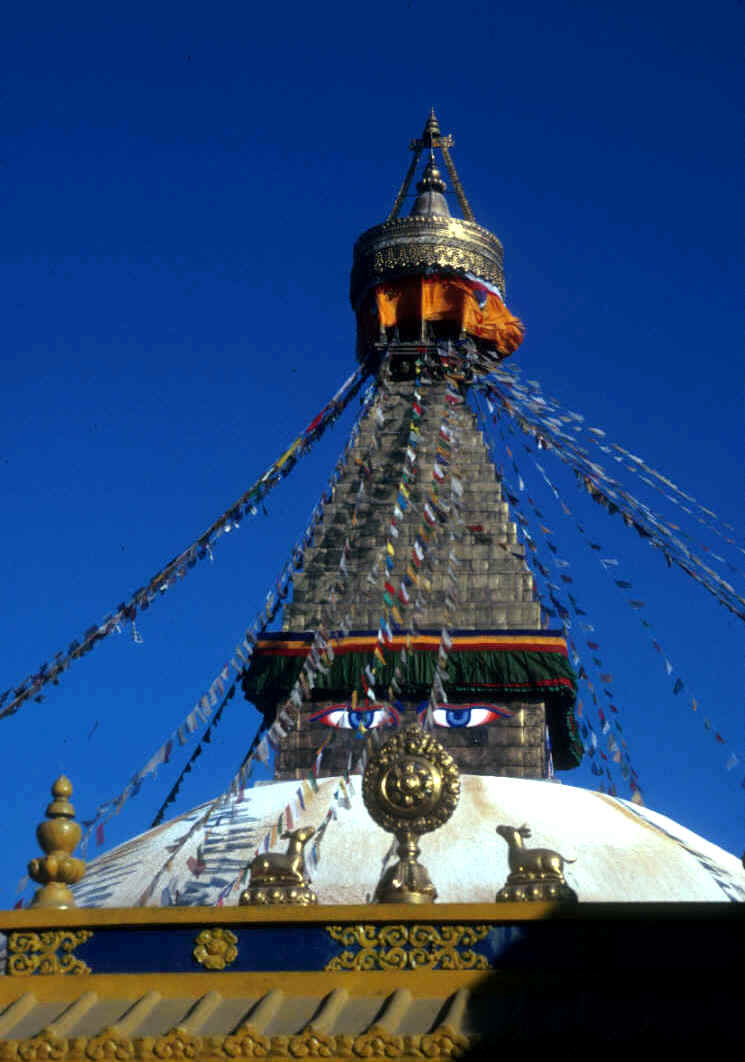 Himalayan
Region: This is the high altitude region in the north along the Tibetan
border. The
altitude in
this region varies between 4877 meters and 8848 meters. It includes
eight of the highest fourteen summits in the world which exceed an
altitude of 8000 meters including Mt. Everest, Mt. Annapurna and others.
Himalayan
Region: This is the high altitude region in the north along the Tibetan
border. The
altitude in
this region varies between 4877 meters and 8848 meters. It includes
eight of the highest fourteen summits in the world which exceed an
altitude of 8000 meters including Mt. Everest, Mt. Annapurna and others.
Mountain
Region:
This is the central hilly strip along the length of the country and it
accounts for about sixty-four percent of the total land area. The
Mahabharat ranges,
which soar up to 4877 meters, and the lower Churia range form this region.
Terai
Region: This
is the plain along the border of India. This lowland, Terai, occupies
about seventeen percent of
the total land area of the country. This is
most densely populated part of the country.
 The neighboring
countries have always heavily influenced Nepal in its social,
architectural and economic development. However, it was never ruled or
colonized by any foreign country. Since ancient times, people migrated
to Nepal from different surrounding countries. These immigrants were already influenced by art and architecture from their country,
which they spread all over Nepal. Therefore we can find a vast blend
of architecture, religion and culture in Nepal.
The neighboring
countries have always heavily influenced Nepal in its social,
architectural and economic development. However, it was never ruled or
colonized by any foreign country. Since ancient times, people migrated
to Nepal from different surrounding countries. These immigrants were already influenced by art and architecture from their country,
which they spread all over Nepal. Therefore we can find a vast blend
of architecture, religion and culture in Nepal.
During the Licchivi
dynasty, Buddhism was most the popular religion in Kathmandu Valley and as a
result, many Buddhist religious structures were built during that
time. But later on, when Hindu kings ruled the country, Hinduism
followers dominated the place. They built many Hindu temples
and other religious structures.
